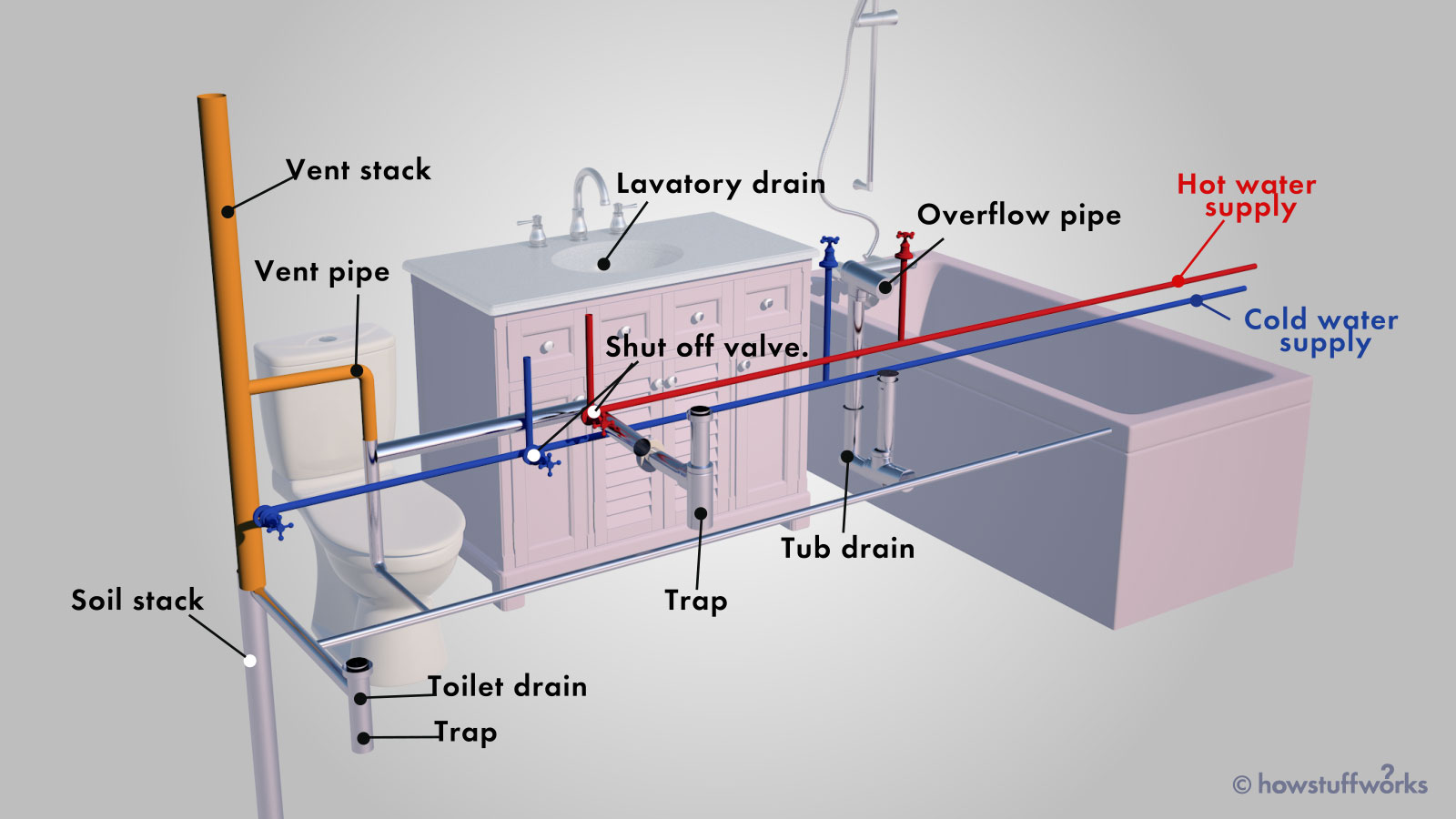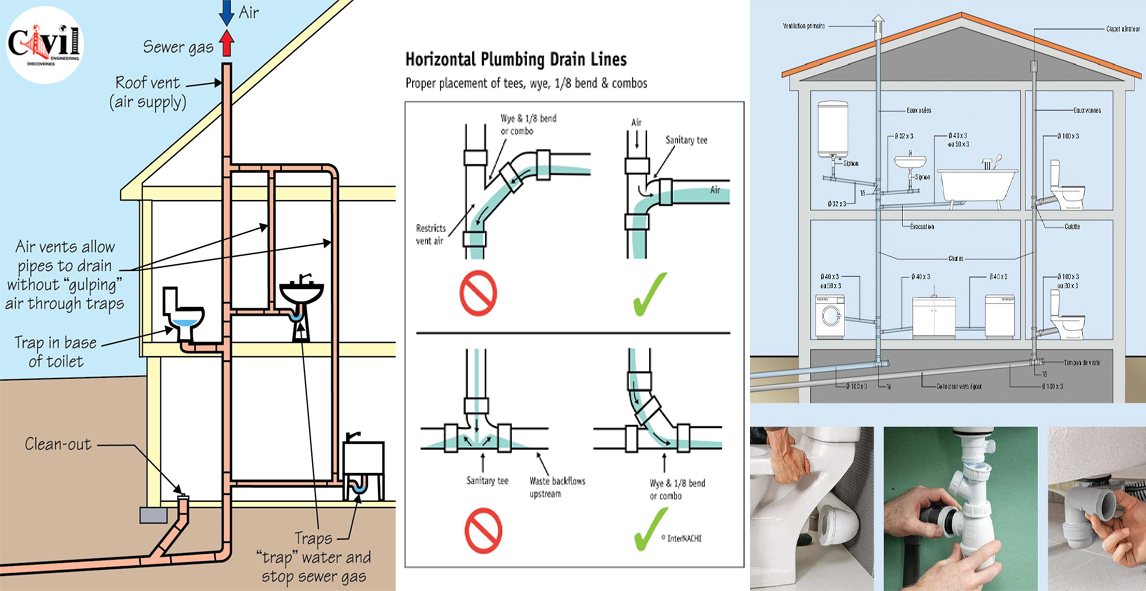Understanding The Structure of Your Home's Plumbing System
Visit HomepageHave you been searching for related information involving Plumbing Installation 101: All You Need to Know?

Comprehending just how your home's pipes system works is crucial for every single homeowner. From delivering clean water for alcohol consumption, food preparation, and bathing to securely eliminating wastewater, a well-maintained plumbing system is essential for your family members's health and wellness and comfort. In this thorough overview, we'll explore the detailed network that comprises your home's plumbing and deal tips on maintenance, upgrades, and managing typical concerns.
Introduction
Your home's pipes system is more than simply a network of pipes; it's a complicated system that ensures you have accessibility to tidy water and effective wastewater removal. Understanding its components and how they collaborate can aid you avoid expensive repair services and make certain every little thing runs smoothly.
Basic Parts of a Pipes System
Pipelines and Tubes
At the heart of your pipes system are the pipes and tubing that bring water throughout your home. These can be constructed from numerous materials such as copper, PVC, or PEX, each with its advantages in terms of toughness and cost-effectiveness.
Components: Sinks, Toilets, Showers, and so on.
Fixtures like sinks, bathrooms, showers, and tubs are where water is utilized in your home. Understanding exactly how these fixtures link to the plumbing system helps in diagnosing problems and planning upgrades.
Valves and Shut-off Points
Valves regulate the circulation of water in your pipes system. Shut-off valves are essential during emergencies or when you need to make repair work, enabling you to isolate parts of the system without interrupting water circulation to the whole house.
Water System
Main Water Line
The primary water line connects your home to the community water supply or a private well. It's where water enters your home and is distributed to different components.
Water Meter and Pressure Regulator
The water meter steps your water usage, while a pressure regulatory authority ensures that water flows at a secure stress throughout your home's plumbing system, protecting against damages to pipes and components.
Cold Water vs. Warm water Lines
Comprehending the distinction between cold water lines, which provide water directly from the major, and warm water lines, which bring warmed water from the water heater, helps in repairing and planning for upgrades.
Drain System
Drain Pipeline and Traps
Drain pipelines carry wastewater far from sinks, showers, and bathrooms to the sewage system or sewage-disposal tank. Traps protect against drain gases from entering your home and also catch particles that could create obstructions.
Ventilation Pipes
Air flow pipes permit air into the water drainage system, preventing suction that might reduce drain and cause catches to empty. Correct air flow is important for maintaining the stability of your plumbing system.
Relevance of Appropriate Drainage
Guaranteeing proper drain prevents backups and water damages. On a regular basis cleaning drains pipes and preserving catches can prevent pricey repair work and expand the life of your plumbing system.
Water Heating Unit
Kinds Of Hot Water Heater
Hot water heater can be tankless or traditional tank-style. Tankless heating units warm water as needed, while tanks keep heated water for prompt usage.
Updating Your Plumbing System
Reasons for Updating
Updating to water-efficient components or replacing old pipes can enhance water high quality, lower water costs, and increase the value of your home.
Modern Pipes Technologies and Their Advantages
Discover modern technologies like clever leak detectors, water-saving bathrooms, and energy-efficient hot water heater that can save money and minimize ecological impact.
Expense Considerations and ROI
Calculate the upfront prices versus lasting financial savings when taking into consideration plumbing upgrades. Many upgrades pay for themselves with lowered energy costs and less repair services.
Exactly How Water Heaters Link to the Plumbing System
Understanding just how hot water heater attach to both the cold water supply and warm water distribution lines helps in diagnosing issues like not enough warm water or leakages.
Maintenance Tips for Water Heaters
Frequently flushing your water heater to get rid of debris, checking the temperature level setups, and checking for leaks can expand its life-span and enhance power performance.
Typical Plumbing Issues
Leakages and Their Reasons
Leaks can occur as a result of aging pipelines, loosened fittings, or high water stress. Dealing with leaks without delay avoids water damage and mold development.
Blockages and Obstructions
Clogs in drains pipes and toilets are frequently triggered by flushing non-flushable products or an accumulation of oil and hair. Utilizing drain screens and being mindful of what goes down your drains can avoid clogs.
Signs of Plumbing Problems to Watch For
Low tide stress, sluggish drains, foul odors, or unusually high water bills are indications of prospective plumbing issues that must be resolved without delay.
Plumbing Maintenance Tips
Regular Evaluations and Checks
Arrange annual plumbing assessments to capture problems early. Search for indicators of leaks, corrosion, or mineral buildup in faucets and showerheads.
DIY Upkeep Tasks
Straightforward tasks like cleansing tap aerators, looking for toilet leakages using color tablet computers, or insulating exposed pipes in chilly climates can avoid major plumbing problems.
When to Call a Specialist Plumber
Know when a pipes issue requires professional competence. Trying complicated repair services without proper understanding can lead to more damage and higher repair work expenses.
Tips for Decreasing Water Usage
Easy practices like repairing leaks immediately, taking much shorter showers, and running complete lots of laundry and meals can conserve water and reduced your energy costs.
Eco-Friendly Pipes Options
Take into consideration lasting pipes products like bamboo for floor covering, which is durable and environment-friendly, or recycled glass for counter tops.
Emergency Preparedness
Actions to Take Throughout a Pipes Emergency
Know where your shut-off valves lie and just how to shut off the water supply in case of a burst pipe or significant leakage.
Value of Having Emergency Situation Contacts Handy
Keep call details for regional plumbing technicians or emergency services conveniently offered for fast action during a pipes dilemma.
Environmental Impact and Preservation
Water-Saving Components and Appliances
Installing low-flow taps, showerheads, and bathrooms can significantly reduce water use without compromising performance.
Do It Yourself Emergency Situation Fixes (When Suitable).
Momentary repairs like using air duct tape to patch a dripping pipe or placing a container under a dripping tap can reduce damage till an expert plumbing professional gets here.
Final thought.
Understanding the composition of your home's pipes system empowers you to preserve it properly, saving money and time on repair work. By adhering to regular upkeep routines and remaining educated about contemporary pipes technologies, you can ensure your pipes system operates efficiently for many years ahead.
HOW YOUR PLUMBING SYSTEM WORKS
Which Pipes Do What?
Blue lines = fresh water supply entering the building Red lines = hot water supply entering the building Grey lines = pipes carrying waste away from the building and venting pipes carrying gases away from the building (through the roof) YOUR MAIN PLUMBING SYSTEMS
There are two main plumbing systems that support your home s basic plumbing needs one that brings clean water into your home, and one that sends dirty water away from your home. Connected to the toilet, bath, shower, and other faucets in your home, these two systems keep your water flowing in the right directions.
ACCESSING FRESH WATER
Fresh and clean water is brought into your home through the main water supply line . Filtered through one pipe, this water is pressured to flow into the various fixtures in your home at any given time.
This water can be sourced from a well located on your property, a pond or river (mostly cottages), or, as in most cases, from the city s municipal water treatment centre. However, it is important to note that water that is untreated, such as the water siphoned from ponds or rivers, may not be safe to drink. Personal water supplies always need to be treated for hardness and contaminants before consumed.
MUNICIPAL WATER SUPPLIES
Improve taste and odour Remove sediment Eliminate hardness Reduce chlorine COLD WATER SUPPLY VS. HOT WATER SUPPLY
Cold water flows into your home or building through the service line, which then distributes hot or cold water to your fixtures. This line is most commonly run through a central column that runs floor to floor. Hot water runs in short and straight pipes as the longer the pipeline, the more heat that will be lost in the transfer. Having shorter pipes also allows residents to access hot water more quickly.
WASTE WATER SYSTEM
Your wastewater system is divided into two parts pipes that send wastewater away from your home and venting pipes that send sewer gas away from your home. Sewage water travels through pipes that flush the water and waste towards local sewers that are operated and managed by your city or town. Most sewer systems rely on gravity to move the wastewater to where it needs to go.
The further away from your toilet or sink, the larger wastewater pipes become. This allows for waste to be disposed of from various parts of your home or business at once without pipe blockages. The angle and flow of these pipes are also essential for keeping your waste pipes clear of build up.
https://harrisplumbing.ca/how-your-home-plumbing-system-works/

I am just very inquisitive about Exploring Your Homes Plumbing Anatomy and I am hoping you liked the post. Are you aware of somebody else who is enthusiastic about the topic? Please feel free to promote it. Thanks a bunch for being here. Kindly come by our website back soon.
Show Details